Using Activity View to Drive Sales Follow-Ups
In the CRM workflow of Pronnel, the Item Activity feature becomes your digital trail of customer interaction. Here, instead of just “items,” the term Customer is used to make sales tracking intuitive and relevant for your pipeline.
Timeline Format with Sales Context
All changes made to a customer's record—such as stage updates, lead owner changes, or communication logs—are recorded in chronological order. This timeline format gives sales managers and team members clear visibility into how a lead is progressing through the funnel.
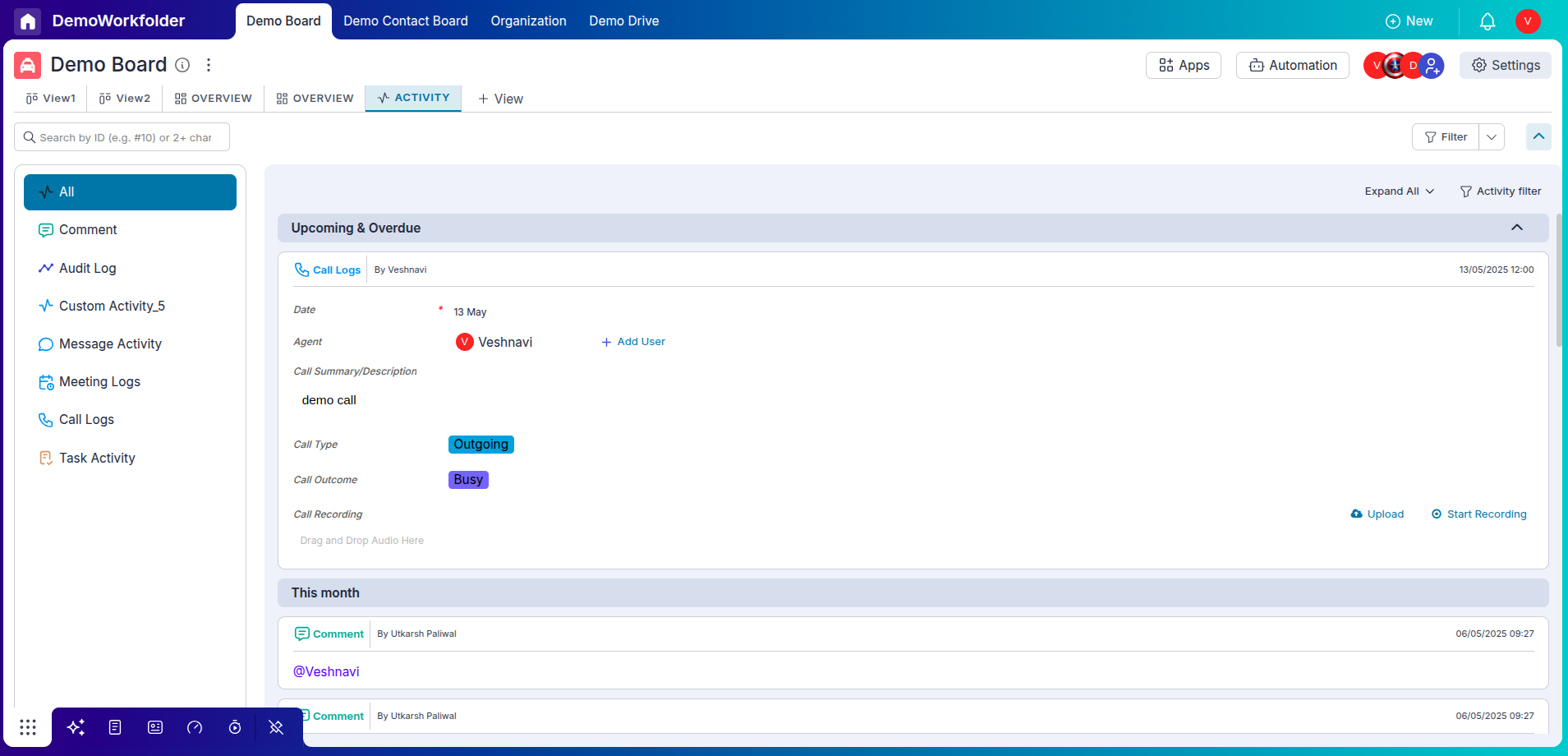
Future Engagements at the Top
Future activities like scheduled meetings, call logs, and demo sessions appear at the top of the activity list. This future-first display helps ensure upcoming touchpoints are never missed and your team stays on track.
Create Customer-Centric Activities
Sales teams can manually log or schedule various activities to maintain thorough customer records and plan follow-ups effectively:
Calls
Log your customer conversations—track the purpose, outcome, and next steps from every sales call.
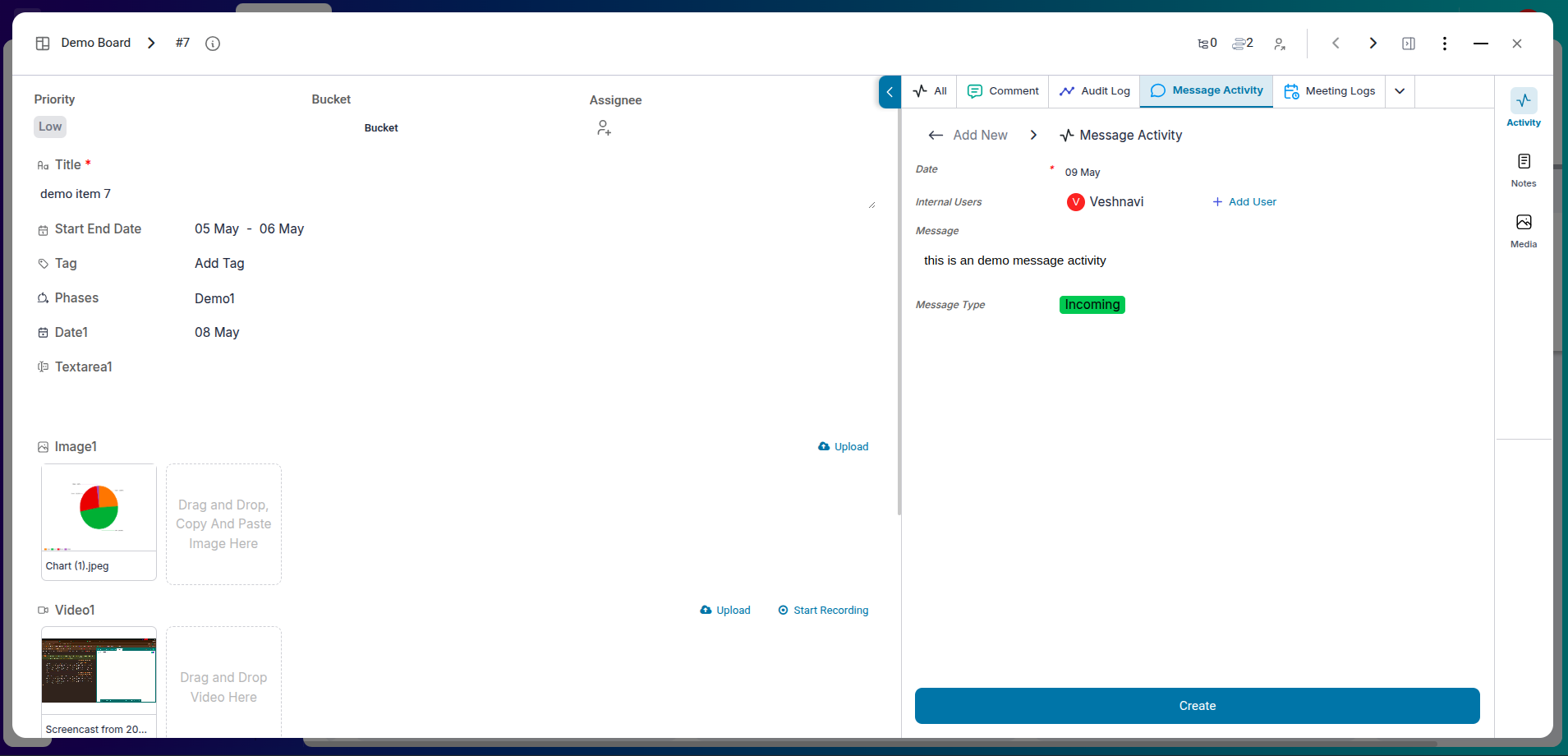
Tasks
Create actionable items for follow-ups, proposal submissions, or internal coordination related to a lead.
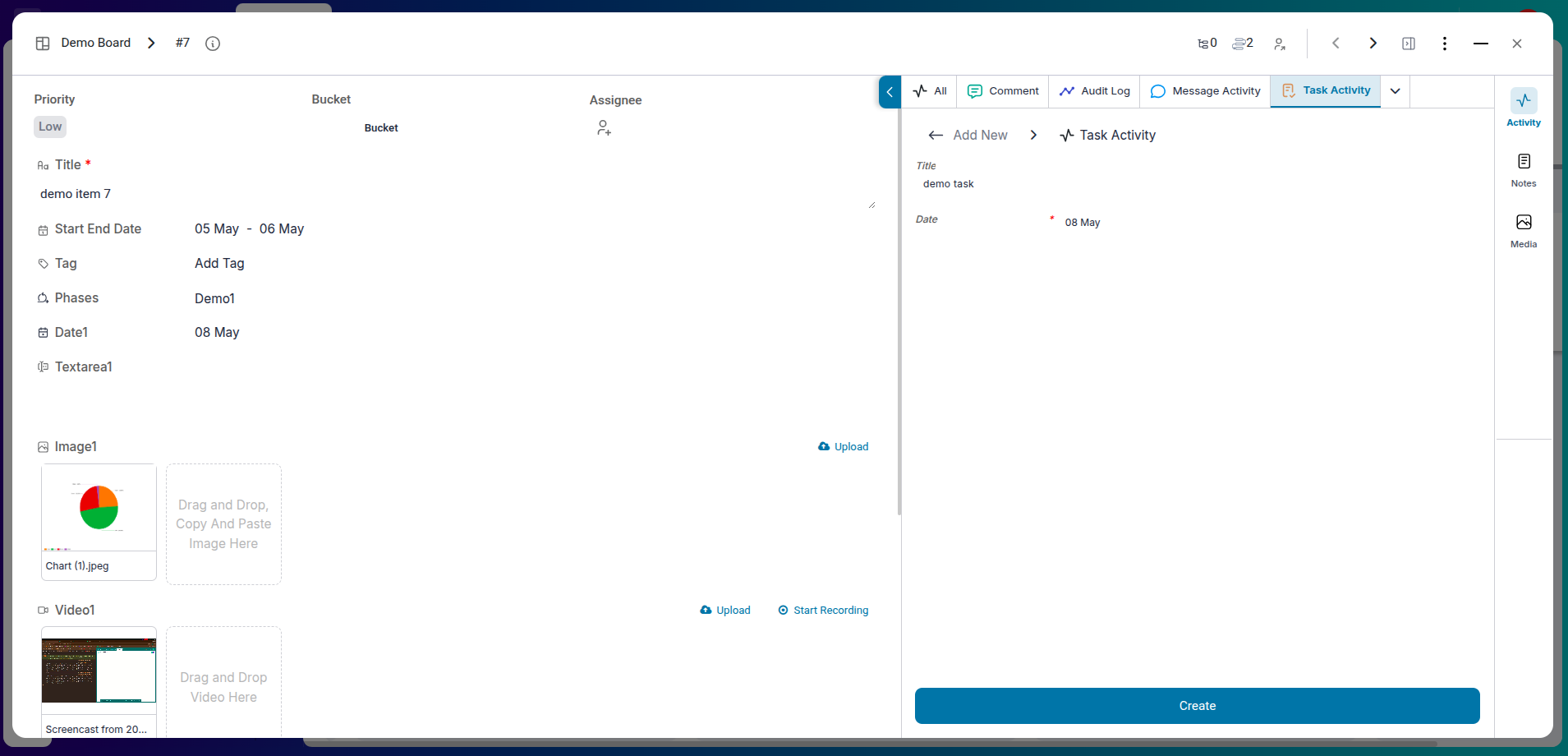
Meetings
Schedule important client-facing interactions such as demos, onboarding calls, or contract negotiations.
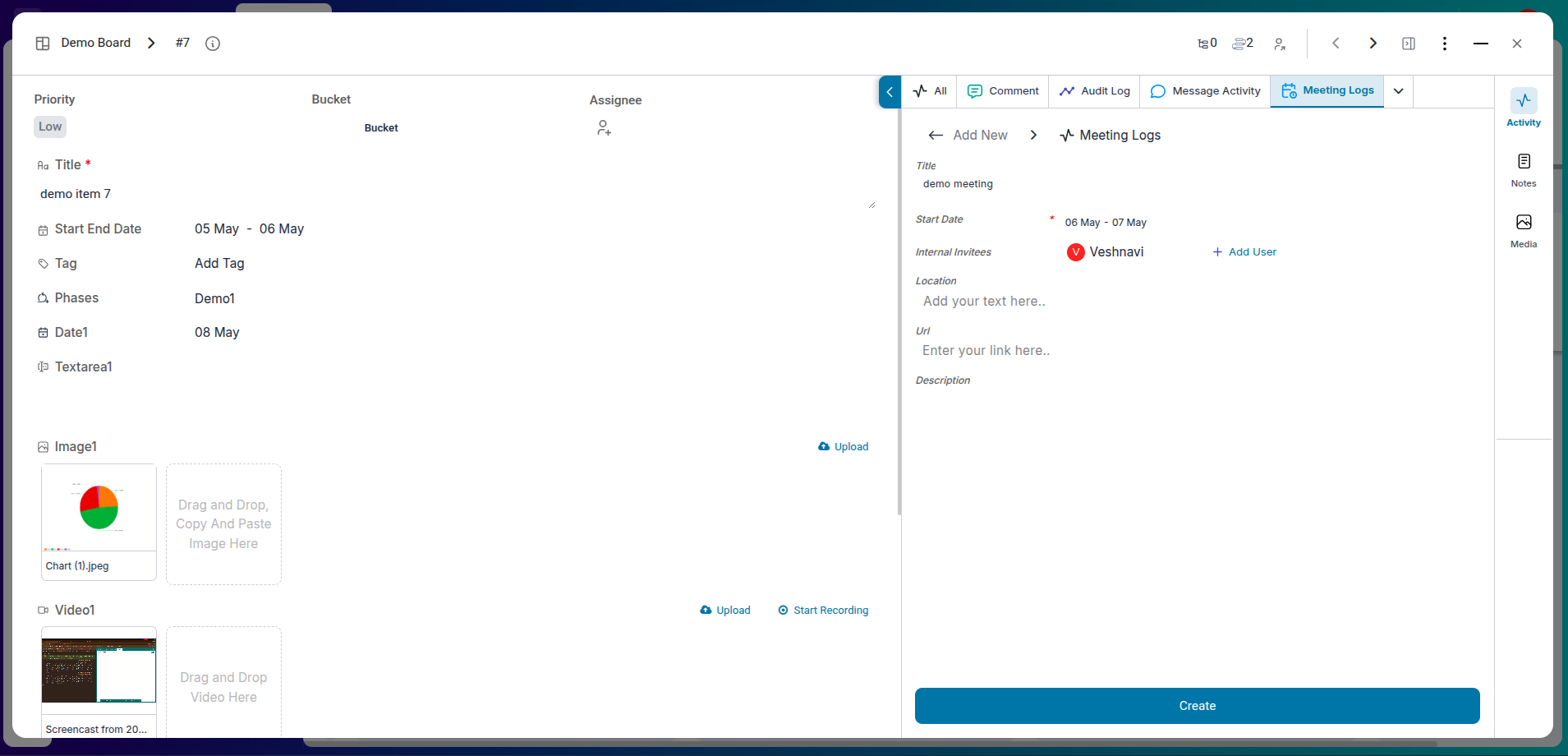
Messages
Record internal notes or share updates within your sales team to ensure alignment across touchpoints.
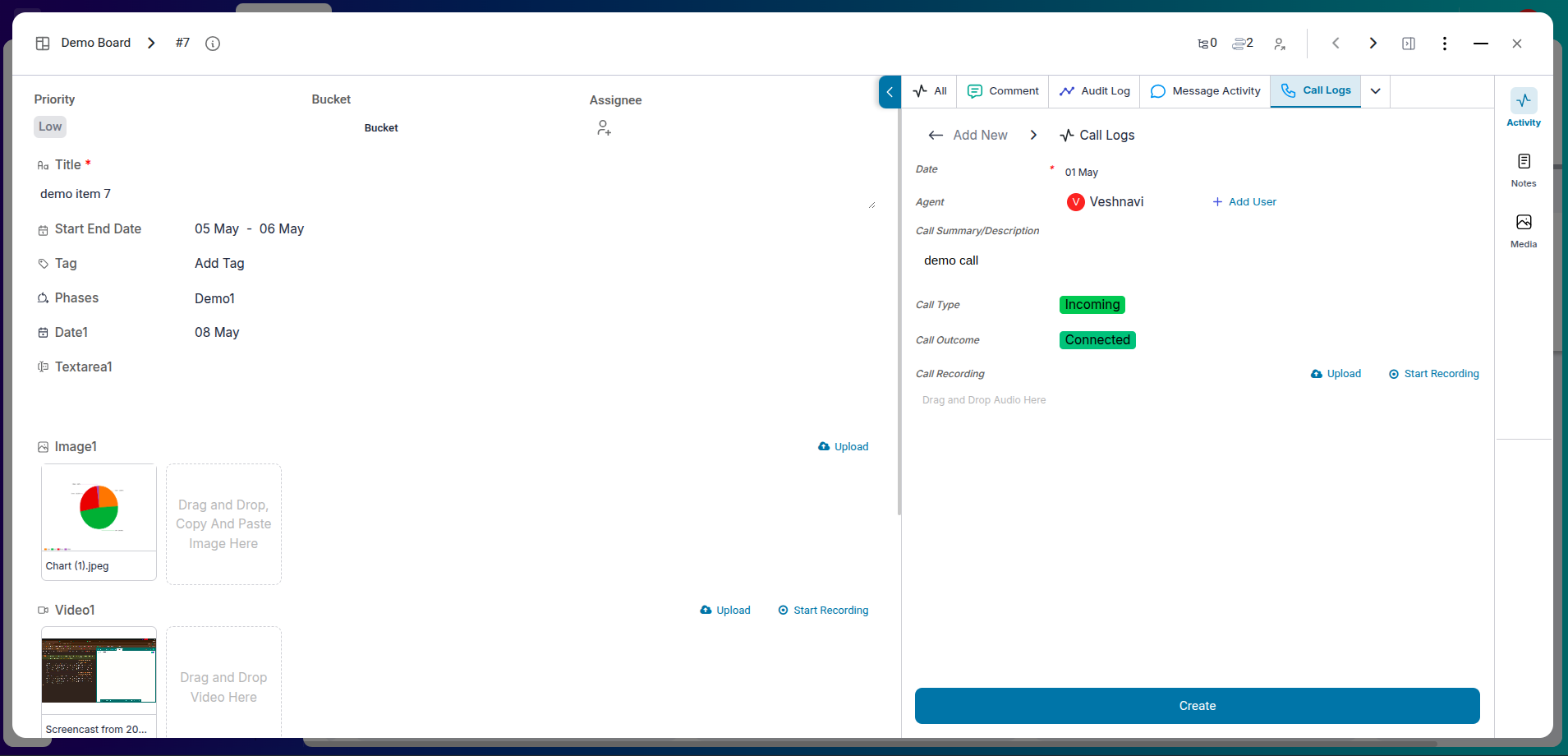
Custom Activities
Capture additional events like field visits, trial extensions, or client training sessions—fully customizable to your workflow.
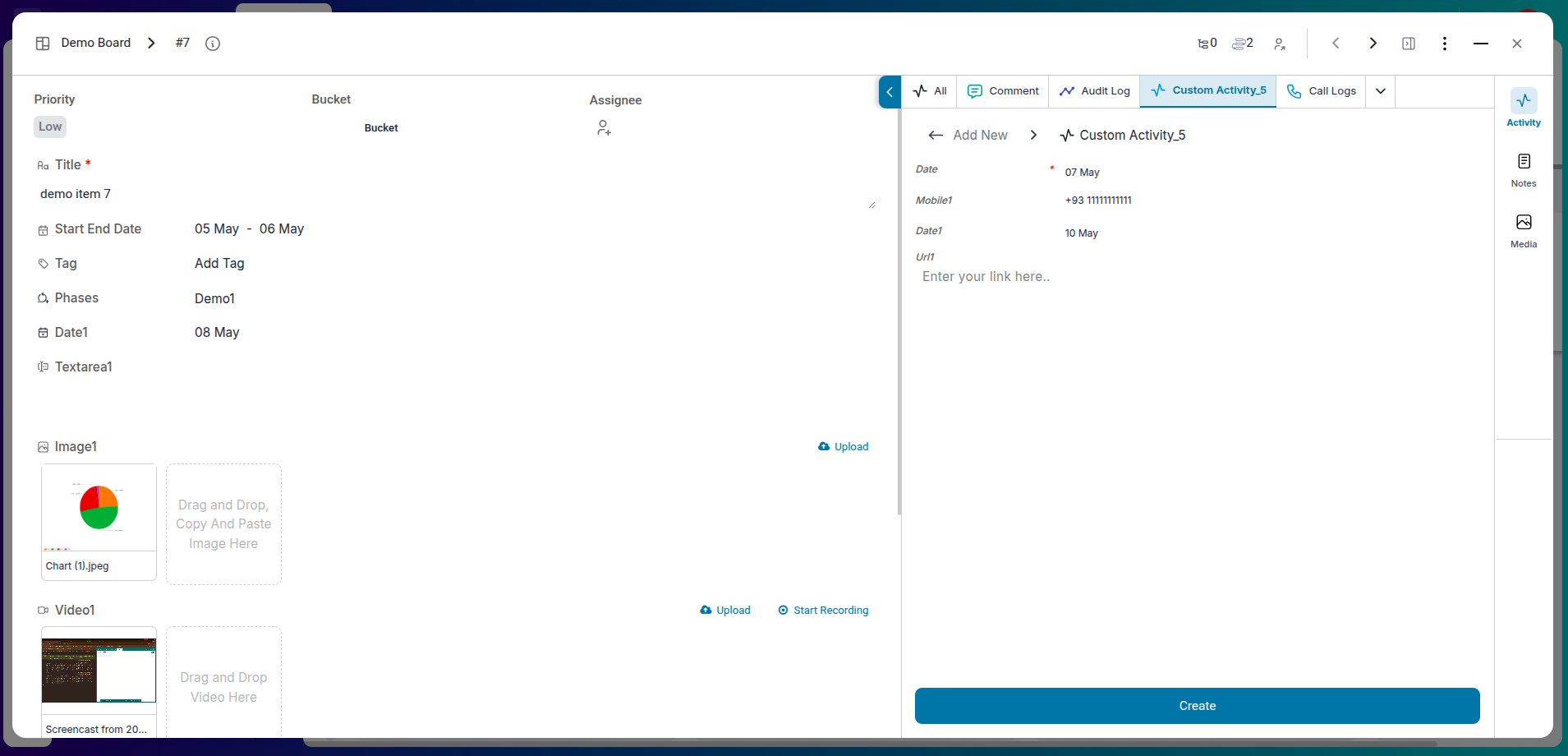
CRM Value
From lead qualification to deal closure, Pronnel's activity tracking helps:
- Sales reps maintain detailed context for every customer.
- Managers monitor team performance and follow-up consistency.
- Leadership evaluate pipeline health and forecast more accurately.
Frequently Asked Questions About Sales CRM Activity in Pronnel
What is the Customer Activity feature in Pronnel?
A chronological timeline that records every interaction and update related to a customer, keeping full context for the sales pipeline.
How is “Customer” different from “Item” in this view?
In CRM, the term Item is shown as Customer to match sales workflows and improve clarity for sales teams.
What activities can I create?
Calls, Tasks, Meetings, Messages, and Custom Activities such as demos, follow-ups, field visits, or training.
Are future engagements shown differently?
Yes. Scheduled meetings, call logs, and demos appear at the top to keep the team proactive.
Can I log past calls?
Yes. Manually add call logs with time, outcome, and participants to preserve a full history.
Can I tag teammates in notes?
Yes. Use @ mentions to notify relevant team members and keep everyone aligned.
Who can see the activity log?
Any team member with access to the customer record sees the activity, ensuring transparency.
Can I attach files to activities?
Yes. Attach documents, screenshots, or recordings for context.
Are activity logs editable?
Manual entries (e.g., messages/custom logs) can be edited per permissions; system logs are read-only.
Can I export the activity history?
Exporting may depend on plan/roadmap. Check your plan or contact support for updates.